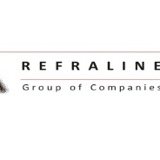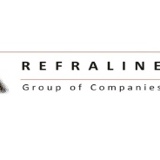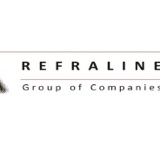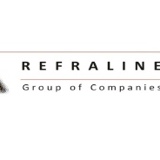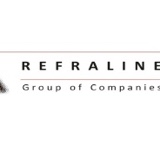Information
-
Document No.
-
Audit Title
-
Client / Site
-
Conducted on
-
Prepared by
-
Location
-
Personnel
Food Premises Information
-
Food Shop Reference Number
-
Proprietor / Company Name
-
Email
-
Person Interviewed
-
Phone Number(s)
General Requirements
-
Establishment has valid certificate of acceptability with council
-
Is the certificate displayed in a conspicuous place?
-
3. Food handlers have skills and knowledge to handle food safely
-
4. No sale of food that is damaged, deteriorated or perished; no use of cracked or dirty eggs or food past use by date
-
Food handled on premises or handled / prepared elsewhere?
Food Handling Controls FSS 3.2.2 cl 5 - 12
-
5. Food protected from the possibility of contamination; food receipt, storage, display and transport
-
6. Names and addresses are available for manufacturer, supplier or importer of food
-
7. Potentially hazardous food (PHF) is under temperature control: food receipt, storage, display and transport; less than 5 degrees, above 60 degrees Celsius . Frozen food is hard frozen
-
8. Processing of foods; items thawed correctly; processed quickly; no contamination risk
-
9. Cooked PHF is cooled rapidly
-
11. Self serve food bar is supervised, has separate utensils and sneeze guard
-
12. Food wraps and containers will not cause contamination
-
13. Food for disposal is separated from normal stock
-
Surface of table and any equipment (utensil,basin, any other surface) used where food is handled is smooth, non-toxic, non-absorbent and is free of open joints or seams
-
Surfaces,crockery, cutlery, utensils or basins use for handling food clean, not chipped, split or cracked
-
Food handling surface cleaned before food preparation and after food is prepared
-
No remains of cleaning materials or disinfectants which may pollute the food
Health and Hygiene FSS 3.2.2 cl 13-18
-
14. Food handlers wash and dry hands thoroughly using hand wash facilities
-
15. Food handlers avoid unnecessary contact with ready to eat food or food contact surfaces by use of utensils, a gloved hand, food wraps etc
-
16. Food handlers do not spit or smoke in food handling areas or eat over exposed food or food contact surfaces
-
17. Food handlers have clean clothing, waterproof covering on bandages
-
18. Food handlers wash hands before commencing/recommencing work and after: using the toilet, coughing, sneezing, smoking, handling raw mead, cleaning, etc <br>
-
19. Food handlers do not handle food if ill (eg vomiting, gastro)
-
20. Hand washing facilities easily accessible and used only for washing of hands, arms and face
-
21. Hand washing facilities have warm running water through single spout, single use towels and soap
-
Food stored not in contact with floor
-
Food stored on shelf kept clean,dust-free and free from impurity
-
Ready to consume food shall be protected against droplets contamination, dust and insects
-
Required protective equipment been used
-
Wearing of jewelry while preparing not allowed
-
Food handled using protective gloves when preparing food
-
Food handler hands, fingernails clean
-
Food handler clean, free from cuts, abscess (unprotected)
-
Food handler suspected of having a contagious disease
-
No smoking in food handling area
Cleaning and Sanitising FSS 3.2.2 cl 19-20
-
22. Premises, fixtures, fittings and equipment maintained to an appropriate standard of cleanliness
-
23. Food contact surfaces, eating and drinking utensils in a clean and sanitary condition/appropriate sanitising method in use (eg chemicals or dishwasher)
Miscellaneous FSS 3.2.2 cl 22-23
-
24. Accurate temperature measuring device readily accessible (eg digital probe thermometer) Accurate to +/- 1 degree Celsius
-
25. Single use items protected from contamination and not reuse (eg drinking straws, disposable utensils)
Animal and Pests FSS 3.2.2 cl 24
-
26. Live animals not permitted in areas in which food is handled
-
27. Practical pest exclusion measures used (eg screens, door seals)
-
28. Practicable measures to eradicate and prevent harbourage of pests (eg housekeeping, stock rotation, pest controller)
-
29. No signs of insect infestation or rodent activity in premises
-
Provided with effective means of preventing flies to the area where food is handled?
Design and Construction FSS 3.2.3
-
30. General design and construction of premises appropriate
-
Adequate illumination provided - minimum 200lux on food handling surfaces
-
Adequate natural ventilation opening directly to natural air
-
Ventilation facilitate addition of adequate fresh air and effective removal polluted or stale air from food handling area
-
31. Adequate supply of potable water available
-
32. Premises has adequate sewage and waste water disposal system
-
33. Premises has adequate storage facilities for garbage and recyclable matter
-
35. Floors are able to be effectively cleaned
-
36. Walls and ceilings are sealed and able to be effectively cleaned
-
37. Fixtures, fittings and equipment are able to be effectively cleaned and where necessary sanitised
-
39. Premises has adequate storage facilities (eg chemicals)
-
Establishment has certificate for gas installation?
-
Toilets, hand washbasins, provided as per regulation C of the regulations
Maintenance FSS 3.2.2 cl 21
-
40. Premises, fixtures, fittings and equipment in a good state of repair and working order
-
41. No chipped, broken or cracked eating or drinking utensils observed
Labelling FSC Chapter 1
-
42. Food Labelling complies with the Food Standards Code
Summary
-
Further action required
- Nil - Premises Satisfactory
- No reinspection required - Ensure all abovementioned non compliances are attended to prior to next routine inspection
- Reinspection 24 hours
- Reinspection 7 days
- Reinspection 14 days
- Reinspection 28 days
- Reinspection 60 days
- Reinspection 90 days
- Reinspection 180 days
- Warning letter
- Improvement Notice
- Prohibition Order
- Penalty Notice
- Other
- Pending
-
Summary of report
-
Regulations /by-laws used for inspection:
I have read this report and understand the contents.
-
Owner / Employee signature
-
SHEQ Auditors signature
-
NB: Assessment report contains findings from date/time of inspection only
-
Select date
